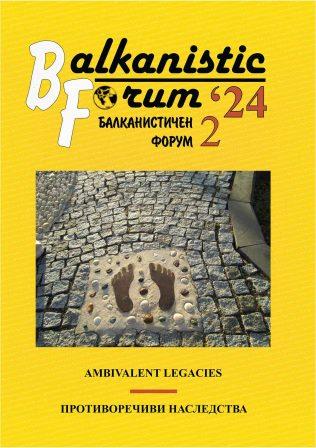Translating Soviet Moldova’s Language Politics: Observations on Tatiana Ţîbuleac’s The Glass Garden in Spanish Translation
Translating Soviet Moldova’s Language Politics: Observations on Tatiana Ţîbuleac’s The Glass Garden in Spanish Translation
Author(s): Antony Hoyte-WestSubject(s): Language and Literature Studies, Studies of Literature, Romanian Literature, Other Language Literature
Published by: ЮГОЗАПАДЕН УНИВЕРСИТЕТ »НЕОФИТ РИЛСКИ«
Keywords: Moldova; Communism; glasnost; multilingualism; Grădina de sticlă; El jardín de vidrio
Summary/Abstract: Grădina de sticlă (The Glass Garden) is the second novel by the prize-winning Moldovan and Romanian author Tatiana Ţîbuleac. Set in Soviet Chişinău towards the end of the communist era, the book is narrated by a Moldovan-speaking young girl who has been adopted by an elderly Russian-speaking woman. Language and identity play key roles in the book, as the child is encouraged to forgo the Moldovan language and to learn how to speak Russian, the language of Soviet prestige and power. This personal struggle occurs against the background of the major sociopolitical and linguistic changes of perestroika and beyond, including the independence of Moldova, and is reflected by the fact that the text of the novel itself (though originally written in Ro-manian) is sprinkled with words and phrases in untransliterated Russian. Accordingly, noting that this complex linguistic situation could conceivably pose a challenge for translators of the novel into other languages, this study contrasts the original with its Spanish version, El jardín de vidrio. The aim is to show how, as part of the legacy of Soviet rule, the enduring complexities of Moldova’s linguistic and socio-political situation can be rendered through translation. Focussing initially on how the Spanish translation deals with the general features of Moldova’s language situation, it then moves to detailing how the novel’s frequent usage of Russian and the Cyrillic script is accommodated in the translated version. Lastly, selected aspects centring on the interplay between languages (e.g. differences in script and lexis, wordplay, misspellings) are scrutinised.
Journal: Балканистичен Форум
- Issue Year: 33/2024
- Issue No: 2
- Page Range: 225-238
- Page Count: 14
- Language: English
- Content File-PDF

